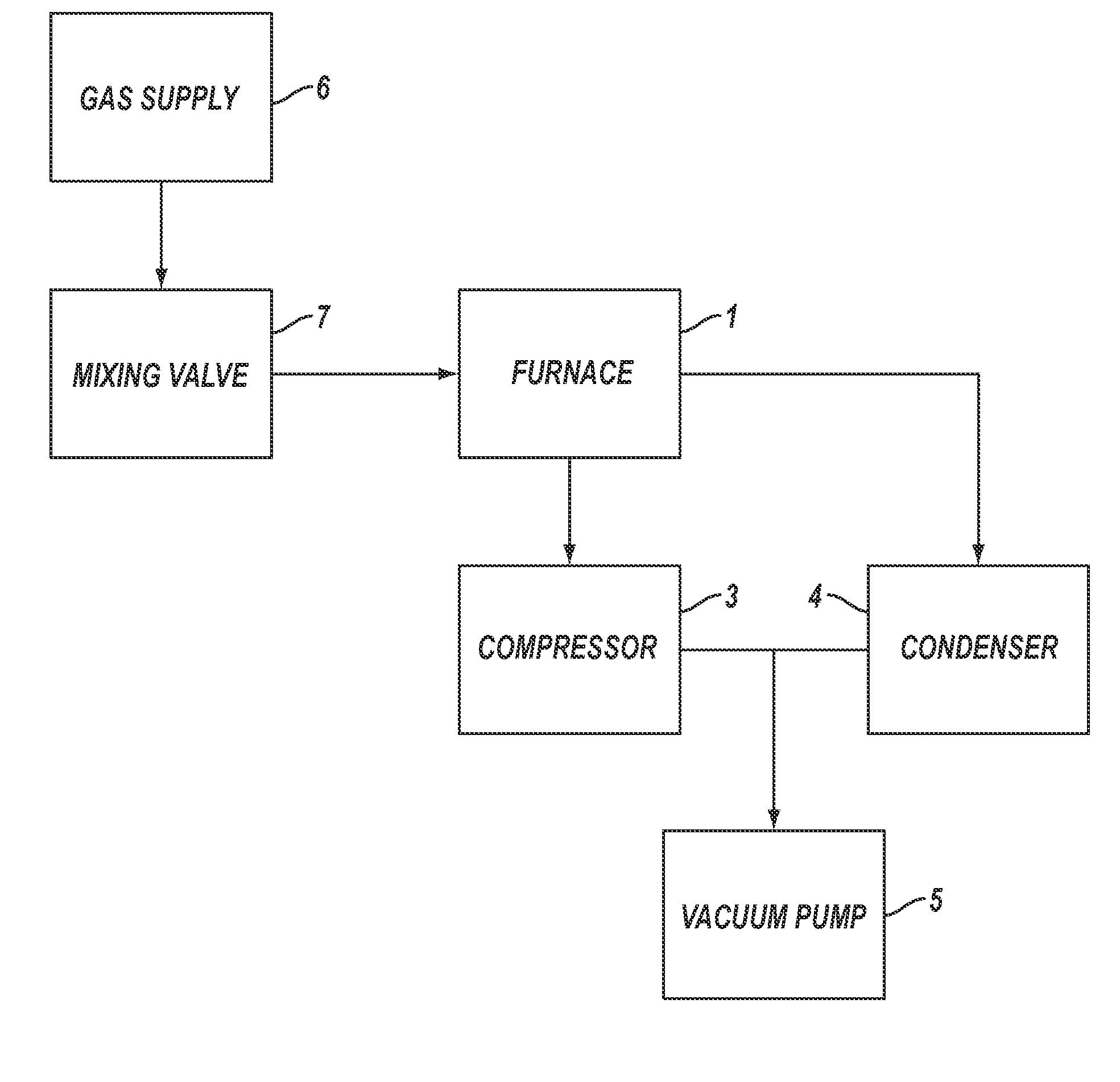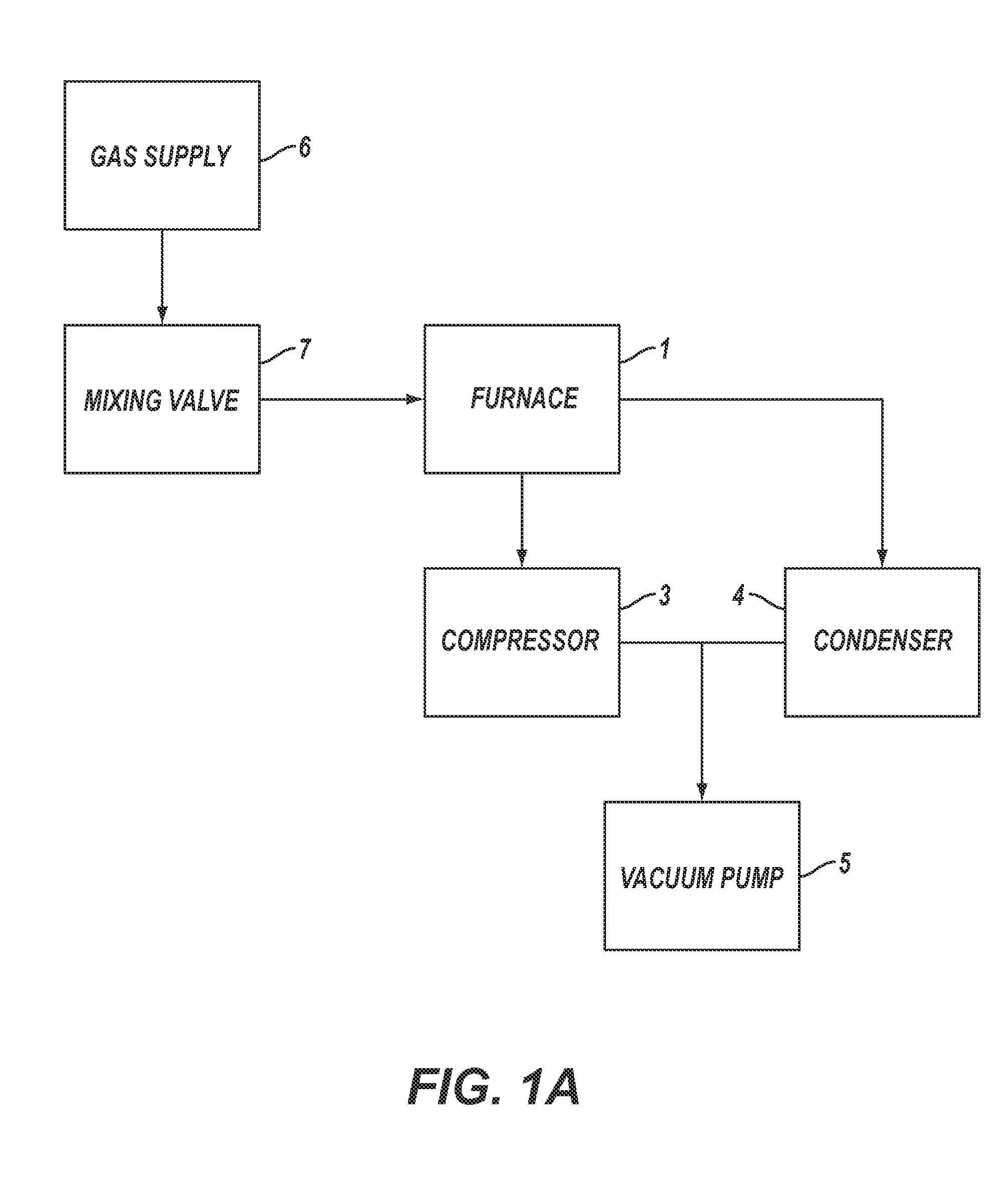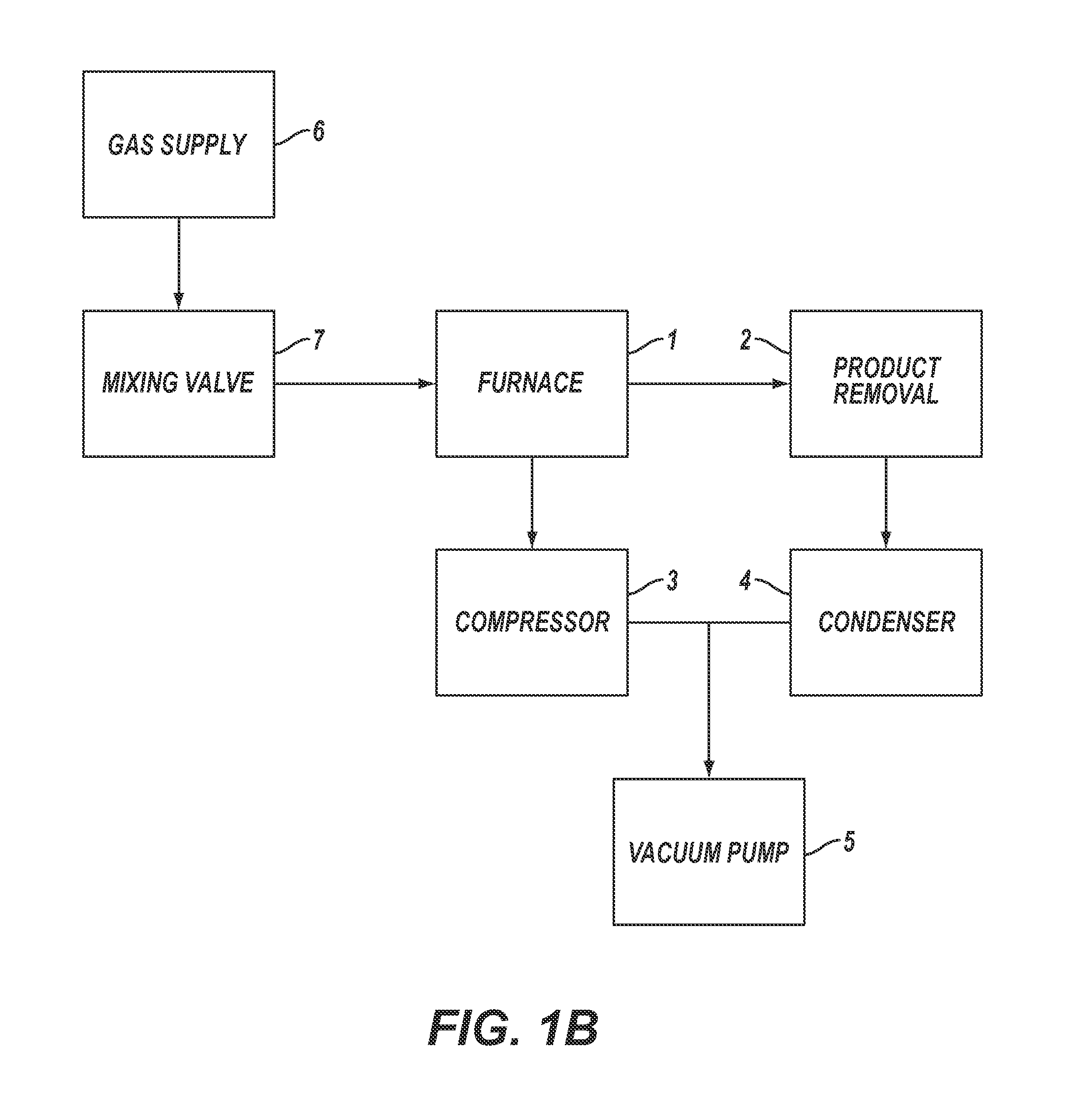Carbon nanotubes having a bimodal size distribution
- Summary
- Abstract
- Description
- Claims
- Application Information
AI Technical Summary
Benefits of technology
Problems solved by technology
Method used
Image
Examples
example 1
Sample 85
[0167]
CarbonReducingExampleOxideAgentCatalystConditionsExample 1CO2H2mild steel pipeP = 113 kPaForestTemp = 700° C.Growth bi-Time = 4 hourmodal CNTs
[0168]For Example 1, the reactor pipe was a mild steel pipe (schedule 40) 5 cm (2 inches) in diameter and 1.2 m (4 feet) long inserted into the tube furnace 1. The vacuum pump 5 was started and hydrogen was used to purge the experimental apparatus for 30 seconds. After 30 seconds, the vacuum pump was turned off, the compressor 3 was turned on, the refrigerated condenser 4 was turned on and the hydrogen gas continued to flow until the pressure was about 113 kPa (850 torr), at which point the hydrogen gas flow was shut off. The tube furnace 1 was then turned on.
[0169]When the tube furnace 1 temperature reached the set point temperature of 700° C., the vacuum pump 5 was turned on, and reaction gases in a stoichiometric mixture of carbon dioxide and hydrogen, from gas supply 6 controlled by mixing valve 7, were used to purge the exp...
example 2
Sample 112
[0173]
CarbonReducingExampleOxideAgentCatalystConditionsExample 2CO2H2304 stainless steel P = 101 kPaMulti Walland quartz diskTemp =Carbon~600° C.NanotubesTime = 1 hour
[0174]For Example 2, a sample quartz disk was placed flat on a 304 stainless steel wafer, which was used as the catalyst. The 304 stainless steel catalyst wafer was placed in the tube furnace 1 at approximately the center line. The vacuum pump 5 was started and helium was used to purge the experimental apparatus for five minutes. After five minutes the vacuum pump was turned off, the compressor 3 was turned on, the refrigerated condenser 4 was turned on and the helium gas continued to flow until the pressure was 91.0 kPa (680 Torr), at which point the gas flow was shut off. The furnace was then turned on.
[0175]When the furnace 1 temperature reached the set point temperature of 680° C., the vacuum pump 5 was turned on and reaction gases in a stoichiometric mixture of carbon dioxide and hydrogen, from gas suppl...
example 3
Sample 35
[0179]
Carbon ReducingExampleOxideAgentCatalystConditionsExample 3CO2H2316 L stainlessP = 101 kPaMulti Wallsteel waferTemp =Carbon~650° C.NanotubesTime = 1 hour
[0180]For Example 3, a 316L stainless steel wafer was used as the catalyst. The 316L stainless steel wafer was placed in the furnace 1 at approximately the center line. The compressor 3 was turned on, the refrigerated condenser 4 was turned on, the vacuum pump 5 was turned on and a purge gas comprising helium from the gas supply 6 controlled by the mixing valve 7, was introduced into the experimental apparatus. After five minutes of purging, the vacuum pump was shut off and the helium purge gas continued to flow until the pressure of the experimental apparatus was 91 kPa, at which point the purge gas flow was shut off. The furnace was then turned on.
[0181]When the furnace 1 temperature reached about 640° C., the vacuum pump 5 was started and reaction gases in a stoichiometric mixture of carbon dioxide and hydrogen, fr...
PUM
 Login to View More
Login to View More Abstract
Description
Claims
Application Information
 Login to View More
Login to View More - R&D
- Intellectual Property
- Life Sciences
- Materials
- Tech Scout
- Unparalleled Data Quality
- Higher Quality Content
- 60% Fewer Hallucinations
Browse by: Latest US Patents, China's latest patents, Technical Efficacy Thesaurus, Application Domain, Technology Topic, Popular Technical Reports.
© 2025 PatSnap. All rights reserved.Legal|Privacy policy|Modern Slavery Act Transparency Statement|Sitemap|About US| Contact US: help@patsnap.com



